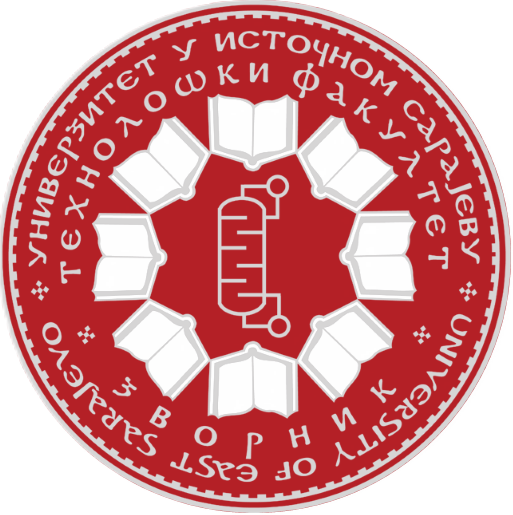THE QUALITY OF COFFEE THAT IS PREPARED AND CONSUMED IN THE TRADITIONAL WAY
Coffee is one of the most popular beverages worldwide. Consumption of black coffee brew, which is prepared in traditional way is characteristic for this region. Consumer expectations in terms of quality and sensory characteristics of beverages can significantly affect on the acceptability of coffee. The aim of this study was to investigate the qual...
By Natalija Džinić, Marija Jokanović, Božana Odžaković, Slavica Grujić
ANALYSIS OF BUSINESS ENVIRONMENT AND BARRIERS
This paper presents the results of tests perception of business environment and barriers to business by attitudes of entrepreneurs in local communities. It is well known that general region of the Balkan countries, is faced with the problem of the lack of investment as well as domestic and foreign direct investment. One of the major causes of cours...
By Mitar Perušić, Miladin Gligorić, Radislav Filipović
PREDICTION MODELS OF NON-FERROUS SECONDARY RAW MATERIALS FORMATION
For the prediction of formation of non-ferrous processing and accumulating waste both model of balancing and model of correlation and regression analysis can be employed, while the dynamic model can be applied only for the accumulating waste. Estimates of the formation of certain type of metallic secondary raw materials in model of balancing are ba...
By Miroslav Sokić, Ilija Ilić, Zvonko Gulišija, Željko Kamberović, Nada Štrbac, Vaso Manojlović
DETERMINATION OF CHANGE IN CONTENT OF HEAVY AND RADIOACTIVE METALS IN DRINKING WATER BY AN INDIRECT ANALYSIS METHOD BASED ON SCALE TESTS
In this paper the content of metal in drinking water was determined in two samples, one from 2008 and other from 2010, by the indirect method based on the analysis of scale, which had originally been suggested by Rajkovic and associates. Received results confirmed that drinking water according to the metal content was of constant level (metals are ...
By Miloš Rajković, Mirjana Stojanović, Maja Eremić Savković, Uroš Lačnjevac, Dragan Tošković
EFFICIENT USE OF SOLAR ENERGY RECEIVERS WITH LIQUID AND AIR AS HEAT CARRIERS
Reduction of fossil - iscrpljivih, but also non-renewable, fuels and increased concentrations of greenhouse gases on a global scale, have led to rapid development of alternative energy sources, resulting in the use of solar energy occupies an important role in the production of energy from renewable sources. The paper presents the system and method...
By Velimir Šćekić
RETENTION AND LIPOPHILICITY OF ESTRADIOL DERIVATIVES IN NORMAL- AND REVERSED-PHASE HIGH PERFORMANCE LIQUID CHROMATOGRAPHY
The retention behaviour and separation ability of some estradiol derivatives were studied by HPLC on silica and C-18 commercially available columns. The mobile phases used were: benzene-ethyl acetate, benzene-tetrahydrofuran, benzene-acetonitrile, isopropanol-water and tetrahydrofuran-water in various proportions. The results are discussed in terms...
By Marijana Ačanski, Đura Vujić, Zvonko Nježić
EXAMINATION OF AFLATOXINS IN MILK AND ACCURACY OF THE METHOD
In this study, we determined the accuracy Vicam method for the determination of aflatoxin B1 in feed and aflatoxin M1 in milk and dairy products by applying the method of standard addition. Analytical yield in all causes ranged from 93 to 95%, indicating a high accuracy of the method. The determination was made on aflatoxin B1 in (n ...
By Julijana Tomovska, Katerina Bojkovska, Velina Stefanovska, Natalija Tomovska
SULFIDE OXIDATION IN TANNERY WASTEWATER WITH H2O2
High concentrations of sulfide in (cumulative) tannery wastewater are the direct cause of very high toxicity of this effluent. Therefore it is necessary to remove this pollutant by the oxidation process. Hydrogen-peroxide is the oxidizing agent, which increasingly acts as an "environment friendly" due to multiple uses for purification, detoxificati...
By Ljiljana Vukić
INVESTIGATION OF THE EXTRACTION KINETICS OF MARIGOLD BY ETHANOL
Marigold (Calendula officinalis L.) defined the particle size was extracted using 40, 50 and 60% ethanol as a solvent by classical procedure of maceration. The kinetics of extraction by given ethanol concentrations in relation to drug:solvent = 1:10 was studied. The quantity of total substances (q0, g/100g drugs), and the quantity of the residue su...
By Vladimir Damjanović, Vladan Mićić, Žika Lepojević
PEROXIDE TREATMENT IN EFFLORESCENCE PREVENTING
Efflorescence is a crystalline deposit of water soluble salts on the surface of ceramic masonry. In most cases, efflorescence can be removed by various cleaning methods depending on the chemistry of the crystalline deposit. But this, sometimes, may even worse the problem. Therefore, it would be most desirable to minimize or to prevent the effloresc...
By Jozefita Marku, Kozeta Vaso






